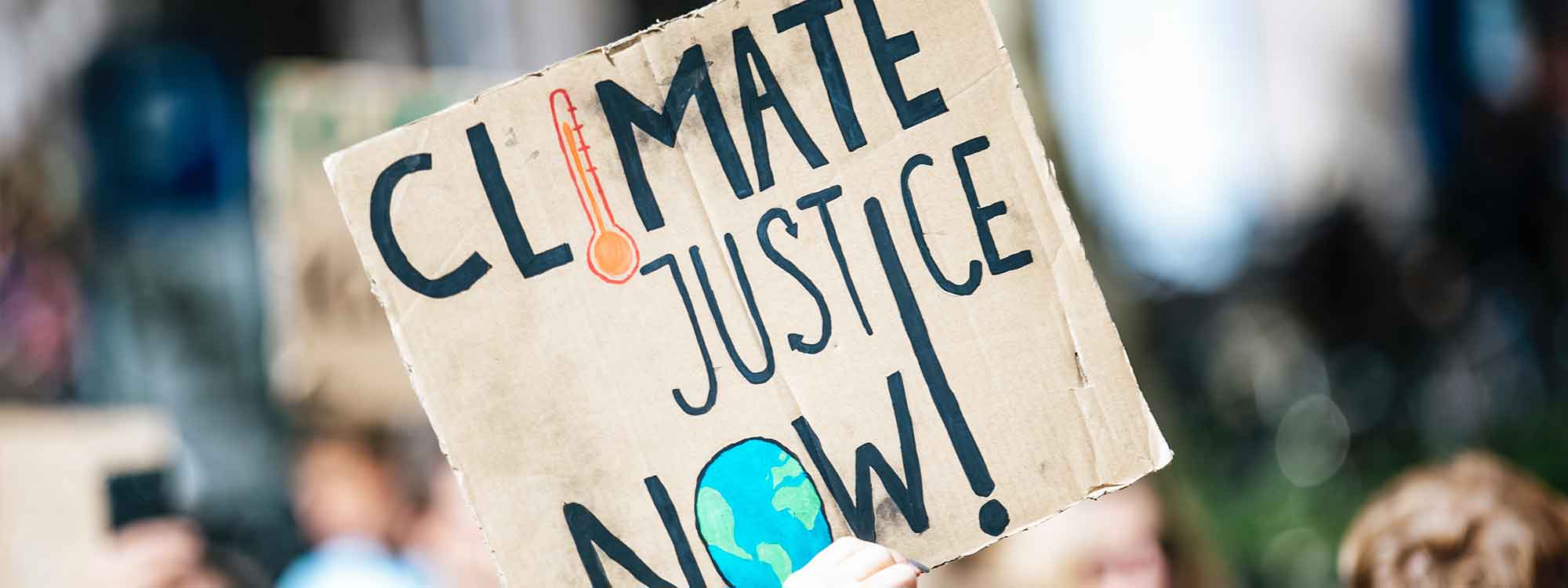Listening to the first episode of Michelle Obama’s new podcast, what struck me was a simple yet profound reflection: together, we are better. When everyone looks out for one another, the whole is greater than the sum of its parts and no one has to feel completely alone.
When I think about our work ahead at Greenbelt Alliance educating, advocating, and collaborating to ensure the Bay Area’s lands and communities are resilient to a changing climate, we have to consider a broader definition of community in order to collectively succeed in adapting to climate change.
With this, it is necessary that our planning conversations around local and regional policy decisions prioritize attention, sustained resources, and solutions for the Bay Area’s low-income communities of color, which are particularly vulnerable to the impacts of climate change. These are also communities that have traditionally been excluded––deliberately––from large scale investment and planning decision-making.
If planning and policy practitioners strive for families, neighborhoods, businesses, and natural and working lands to be ready and prepared to withstand––and come out stronger––after the flooding, fires, and droughts in our future, then we must also acknowledge this reality: while all Californians feel the impacts of climate change, climate change does not affect all people in the same way.
Frontline Communities Are More Vulnerable to Climate Change
In the US, flooding disproportionately harms majority-Black neighborhoods, as Black residents live in the lowest-lying areas, lacking green space to absorb floodwaters, which are instead designed with endless pavement and other impermeable surfaces. This analysis of heat and income in urban areas nationwide finds that low-income areas are more likely to be hotter than wealthier counterparts, and more disproportionately comprised of residents of color. And, another recent study of wildfire risk across the US shows that communities of color, indigenous peoples, and tribal nations face greater vulnerability to wildfires compared with predominantly white communities.
The United States historically has not made decisions for the greater good of our country, intentionally leaving certain folks behind while protecting and elevating others (the same goes for the Bay Area, too). More specifically, racist policies and practices established and proliferated by white people in power have resulted in inequitable power and resource distribution.
Decades of institutional racism and disinvestment have resulted in communities of color, low-income communities, immigrant communities, indigenous peoples and tribal nations exposed to high levels of poverty and pollution, outdated and under-maintained infrastructure, as well as limited access to public services.
These and other pervasive socioeconomic conditions are the reasons why frontline communities have fewer resources to draw from to deal with climate risks. They are hit harder when it comes time to respond to a major flood event, heatwave, or wildfire.
The Equitable and Just National Climate Platform, formed one year ago by a group of environmental justice and national environmental advocates, states our society’s climate injustices best:
“Systemic racism and injustice have left economically disadvantaged communities, tribal communities, and communities of color exposed to the highest levels of toxic pollution, as well as the most vulnerable people subject to more powerful storms and floods, intense heat waves, deadly wildfires, devastating droughts, and other threats from the climate crisis.”
This is where I see the link between environmental justice—a deliberate, just approach to advancing community resilience to climate impacts—and advancing social, racial, and economic justice, as well as equity.
As climate change and its effects continue to devastate our world, the land-use decisions guiding how communities are built or rebuilt are decisions that can also create more equitable neighborhoods, and create housing and jobs established by and for people of color.
The land-use policies and programs established to protect areas and equip communities to withstand and recover from future natural disasters are the same pathways local leaders can prioritize to fund the physical infrastructure lacking in majority-Black neighborhoods that would reduce flood risks or extreme heat, provide more public transportation infrastructure currently lacking, and thereby increase resiliency, mobility, and community wealth.
If advancing equitable climate resilience is part of advancing our society’s call for racial justice, then organizations like Greenbelt Alliance should drive our climate advocacy by placing equity and anti-racism front and center. As we commit to guide our work through this lens, I am reflecting more and more on what this looks like in practice.
Protecting People Over Physical Infrastructure
One way that government officials and public policy analysts have traditionally decided where to focus climate adaptation dollars is by identifying areas exposed to climate risk and then applying a cost-benefit analysis to determine where to direct precious public resources on large-scale infrastructure, like flood control projects.
However, looking closer at cost-benefit analysis, it is clear that this approach can perpetuate environmental racism, fueling disparities in environmental and public health that further devastate communities of color.
Applied to climate adaptation decision making, cost-benefit analysis normally focuses on ensuring adaptation costs do not exceed the value of the property receiving the investment. Harris County in Texas serves as an example of a jurisdiction that continues to perpetuate racism through its policies and practices, which lowers property values in communities of color due to the neglect in infrastructure improvements and repeated damages from flooding.
As this NY Times article highlights, Harris County had been applying the typical cost-benefit analysis methodology, prioritizing spending on flood control to protect the most “valuable” property. This ultimately benefited wealthier and whiter areas over neighborhoods with large Black and Latinx populations that have deliberately depressed property values.
In the wake of Hurricane Harvey, the passing of a massive bond to fund 500 flood-control projects, and change to the local elected leadership, this community finally altered its course. Local leaders eventually decided to rank which flood control projects to fund in part based on a social vulnerability index. Driving climate adaptation decisions in this way offers a glimpse into a different, more equitable future.
When Greenbelt Alliance discussed equitable climate solutions with Sona Mohnot from The Greenlining Institute, this was one of her main suggestions: in order to develop climate adaptation policy recommendations aimed at protecting the Bay Area’s most vulnerable communities, practitioners should think about not only exposure to climate risk, but vulnerability to climate change, which is driven by the social, racial, and economic context of a specific community.
The degree to which an individual, a family, or an entire neighborhood is vulnerable to climate change is influenced by multiple factors like existing inequities, institutional racism, and marginalization, as well as the current reach of policy solutions. Sona offered a few concrete examples of these kinds of vulnerability factors:
- Lack of good, well-maintained infrastructure to provide protection from climate risks, which is attributed to the neglect that has come from policies like redlining
- Access to a car to escape during a climate disaster
Sona and others at The Greenlining Institute have been giving much thought to how policymakers should operationalize equity in policies and grant programs. Their Guidebook published in 2019 is an excellent practical resource for making equity real in climate adaptation and community resilience.
Back to the example from Texas: what struck me the most about Harris County’s story was the commitment to shift away from protecting physical infrastructure to protecting people and prioritizing support to those residents in the community that will be most impacted by climate change–the most vulnerable with the least amount of resources. For Harris County and many other counties across the country, this means prioritizing strategies and solutions to frontline environmental justice communities.
As policy advocates, we can play a role in holding decision-makers accountable to communities that need more assistance in preparing for climate change than others. In doing so, we all take a longer-term view of the return on that initial adaptation investment to account for the positive community impacts down the road––improved health and wellbeing, community wealth, and social, economic, and climate resilience––as well as the cost-savings from preventable future damages.
The whole community benefits when climate policy deliberately centers equity and anti-racism to deliver environmental justice; the whole becomes greater than the sum of its parts.
We thankfully have bold leaders in the US House and Senate signaling their commitment to environmental justice by introducing the Environmental Justice for All Act to achieve health equity and climate justice for all, particularly disinvested communities of color. Among the notable aspects of the legislation, it calls for meaningfully engaging impacted communities in government decision-making processes (such as federal permitting decisions for infrastructure projects!), the creation of climate resiliency plans, and the transition to clean energy.
Working on environmental justice is inextricably linked with promoting solutions to society’s myriad injustices. Senator Kamala Harris recently summed this up eloquently by saying: “Environmental justice is interconnected with every aspect of our fight for justice. From racial justice and economic justice, to housing justice and educational justice, we cannot disentangle the environment people live in from the lives they live.”
The groundswell of attention, and action, against racism we are witnessing today––while overdue––signals this is an especially critical moment for actors in the climate movement to define and deliver bold and equitable solutions. Now is our time to take a more just view to truly see who is most at risk of climate change, for the privilege of not knowing about the disparities in our own neighborhood is itself a form of discrimination.
To those who care deeply about addressing the climate crisis: now is the moment to seize the opportunity and the responsibility to carry out this work in such a way that addresses the history of environmental racism and rewrites a more environmentally just future.
Photo: Markus Spiske via Unsplash





